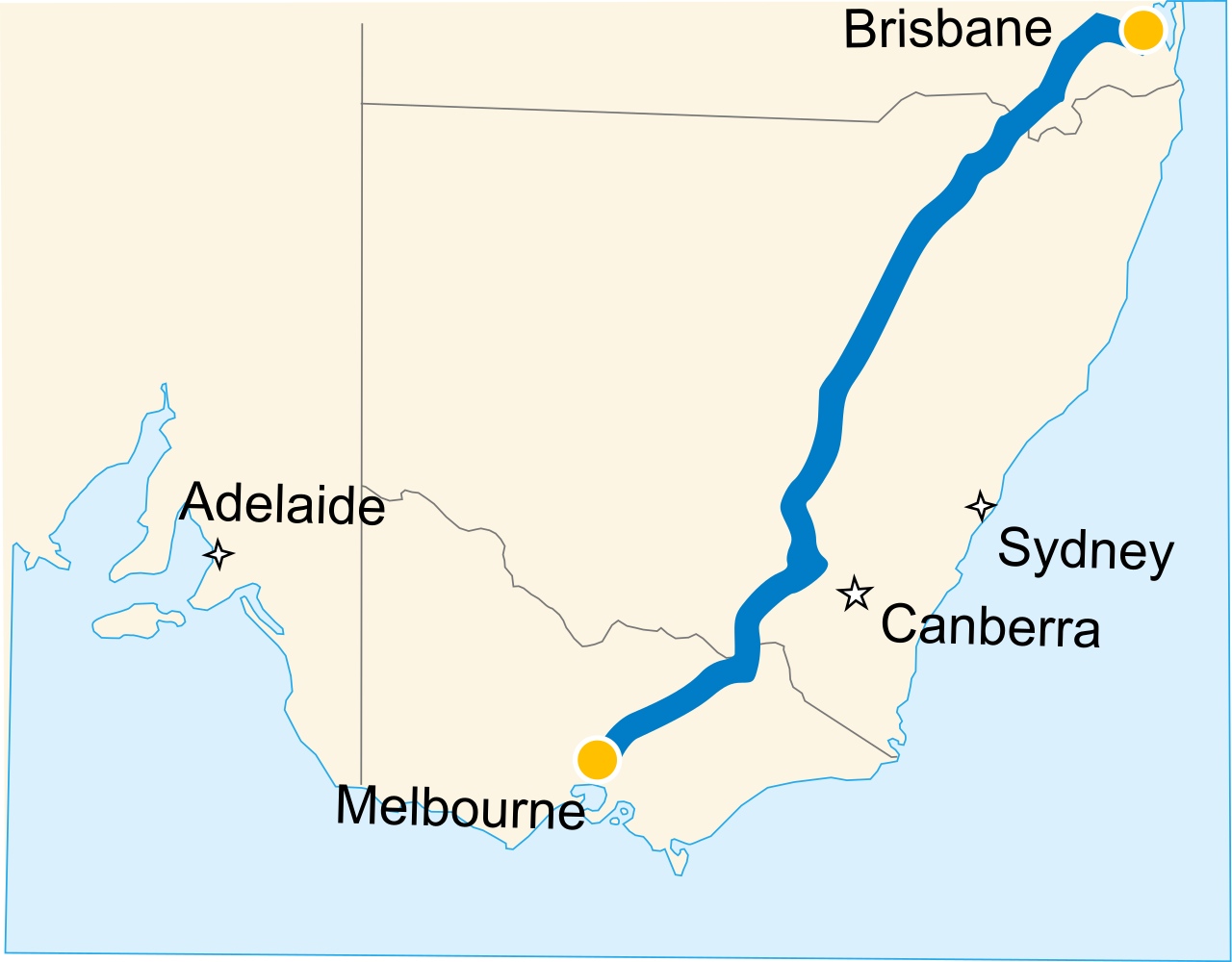The federal government of Australia and the state of Queensland have signed an agreement to deliver the Inland Rail project, a 1,700km, double-stacked freight railway that slices through the continent’s eastern interior from Melbourne to Brisbane, bypassing the congested Sydney network.
When it is complete, a train carrying the same weight of cargo as 110 trucks will be able to make the trip between Australia’s south and east coasts in less than 24 hours.
The US$6.3bn project, which the government’s describe as “the most significant freight infrastructure project in the nation’s history”, is being developed by the Australian Rail Track Corporation as 13 sub-projects, each with its own team.
Five of those are in Queensland, and will involve sections totalling 275km and the upgrade of 125km of existing track.
The rail scheme in Queensland, unlike the rest of the line, will be double-tracked and dual gauge to accommodate the state’s narrow gauge system and the Inland Rail’s standard gauge.

An approximate visualisation of the Inland Rail route (Porjo/CC BY-SA 3.0)
Michael McCormack, Australia’s deputy prime minister and infrastructure minister, said the project was a “game changer for regional Australia”, would create more than 7,000 jobs and increase the state’s GDP by $4.8bn.
He added: “We’re already seeing the benefits in New South Wales with the section of track between Parkes and Narromine under way. For this 100km section, more than AS$46m in contracts have been committed to 84 local businesses with 1,000 people having worked on the project – 400 of those are locals.”
Mark Bailey, Queensland’s transport minister, said the agreement with the federal government would lead to nearly US$1.4bn worth of joint-funded road and rail projects.
“This deal will see us work with the federal government on business cases for passenger rail services from Salisbury to Beaudesert, Brisbane to Toowoomba and a dedicated rail freight line to the Port of Brisbane.”
He added: “Queenslanders can have confidence that a comprehensive and detailed approvals process for the project is being undertaken that includes rigorous environmental, planning and statutory approvals.”
Top image: Cargo will be able to make the trip between Australia’s south and east coasts in less than 24 hours (courtesy of www.inlandrail.gov.au)
Further reading:










